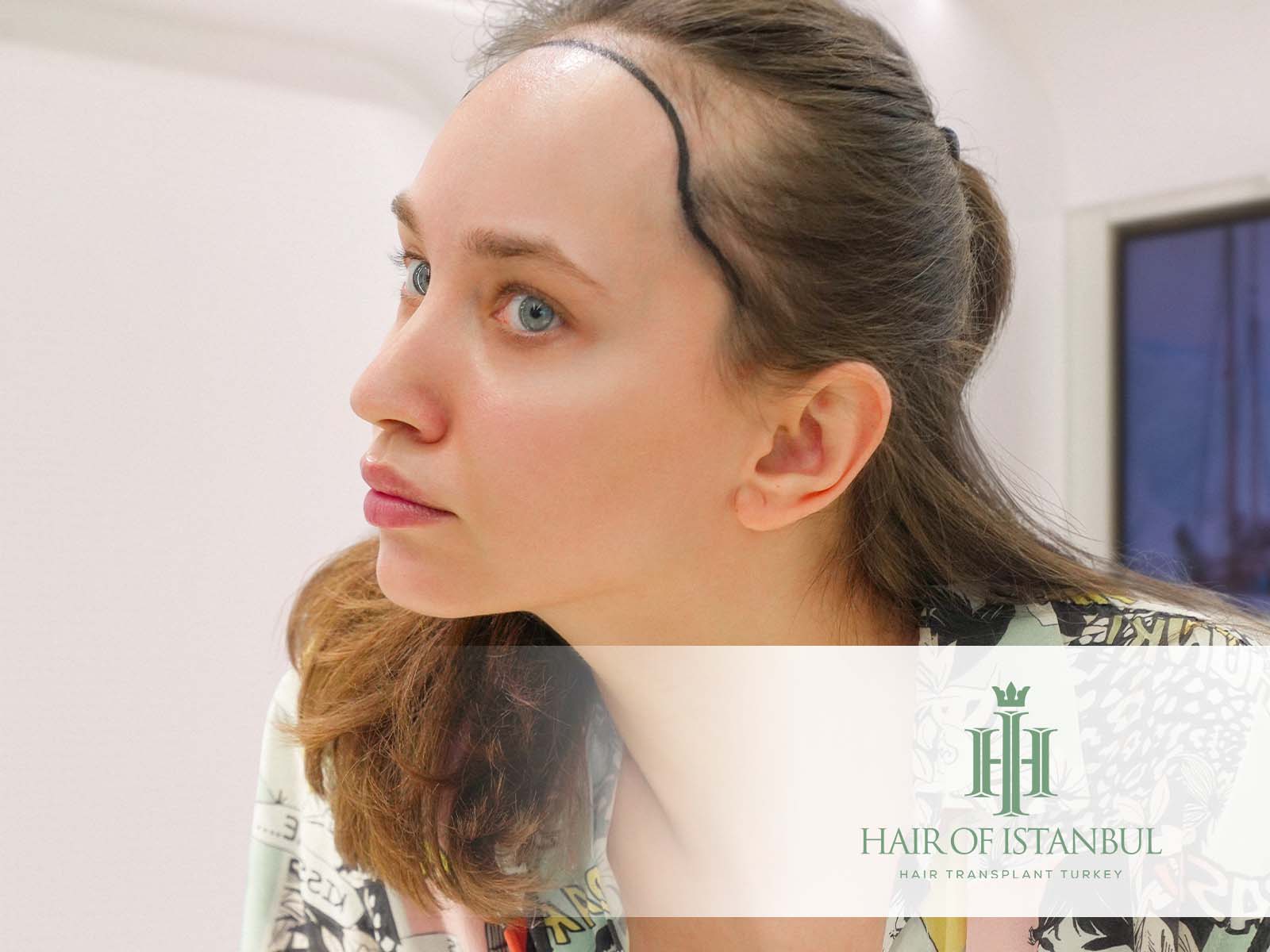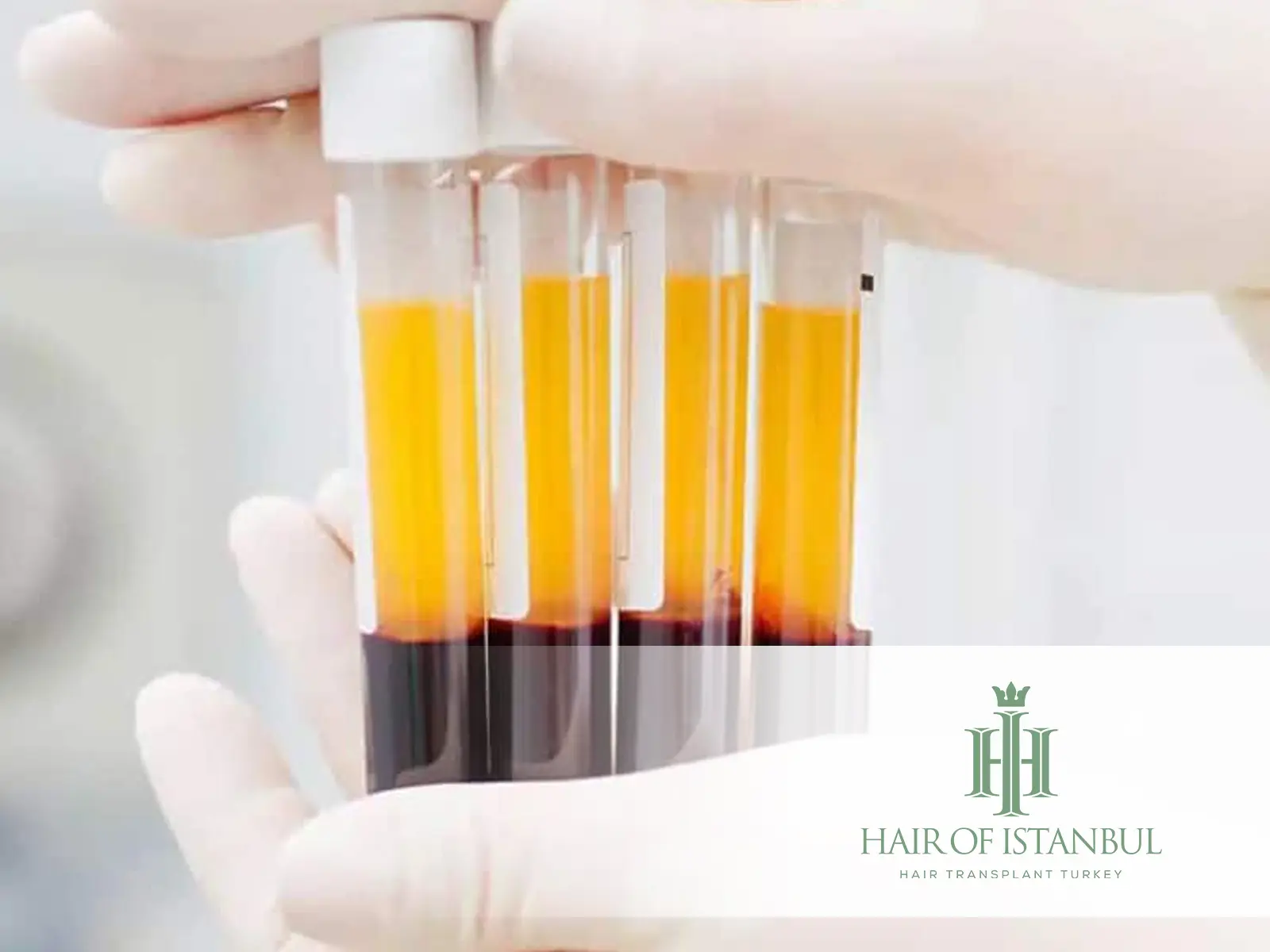Women's Hair Transplant

Hair Loss in Women
Causes & Types
Female‑pattern hair loss most often presents as diffuse (widespread) thinning according to the Ludwig/Savin classification.
In addition:
-Androgenetic alopecia: Thinning hair shafts with reduced density at the crown/part line due to genetic predisposition.
-Telogen effluvium: Periodic shedding triggered by stress, systemic illness, or medications.
-Traction alopecia: Recession/opening behind the hairline from mechanical tension (e.g., tight ponytails/braids).
-Systemic causes: Thyroid disorders, low iron/ferritin, PCOS, postpartum period, and similar conditions.

Who Is a Candidate for Women Hair Transplant?
Eligibility: is determined by donor area density, degree of miniaturization, stabilization of the hair‑loss pattern, and overall medical suitability.
– The donor area (occipital scalp) must be sufficiently dense and healthy.
– If hair loss is in an active phase, medical management may be considered first.
– The procedure may be postponed during pregnancy/breastfeeding.
– Expectations should be realistic based on hair shaft caliber and donor capacity.
Note: Before planning transplantation, the type, rate, and stabilization of hair loss must be assessed by a physician.

Women's Hair Transplant Methods
– FUE (extraction technique): In all cases, graft harvesting is performed according to FUE principles. The donor area is partially shaved as needed and can be concealed within long hair; the trimmed zone is generally not visible after the procedure.
– SLiT (slit/channel method): One of the most commonly used implantation approaches. Incisions are minimal; recovery is typically fast. High graft survival is targeted in suitable indications; outcomes vary by individual factors.
– Sapphire (micro‑channel): In certain skin types, micro‑channels may be created with sapphire tips. The choice is made by the physician based on skin characteristics, target density, and the operative plan.
– DHI (implanter pen): May be used alone or combined with other methods. Grafts are placed directly into the recipient area with a pen device; this can be advantageous for densifying the part line and the frontal region.
Selection is personalized; hair shaft caliber, target density, donor capacity, and skin characteristics guide method choice.

Procedure Steps
1. Consultation & analysis: Photos/trichoscopy, medical history, blood tests.
2. Planning & design: Hairline, density, and graft spacing.
3. Local anesthesia: Applied to keep the procedure comfortable and pain‑free.
4. Graft harvesting with FUE: Micro‑punch extraction from the donor area.
5. Recipient site preparation/implantation: Channel creation or pen‑assisted placement depending on the selected technique.
6. Dressing & briefing: First wash, aftercare protocol, and follow‑up appointments.
Aftercare & Supportive Treatments
To support transplant success, the following physician‑guided protocols may be considered:
– PRP: May be applied to support circulation and the peri‑follicular environment.
– Low‑level laser therapy (LLLT): Plays a supportive role via home/clinic protocols.
– Topical/medical therapies: Physician‑recommended products may be used in suitable candidates.
This section is for informational purposes; always consult your physician for prescription/active treatments.

Risks & Safety
As with any surgical procedure, women’s hair transplant may involve swelling, temporary redness, and pinpoint marks in the donor area. With strict sterilization protocols, single‑use consumables, and an experienced team, complication risks are minimized. Medical history and current medications are reviewed thoroughly before the procedure.
Before & After
To view Women’s Hair Transplant before‑and‑after photos, click here.
Yes. Depending on the technique selected and the size of the area, a no‑shave or partially shaved approach can be planned.
If donor supply is limited, target density may be reduced, the area narrowed, or combined strategies (e.g., focusing on the most visibly thinned area) discussed. The final decision is made after an in‑person evaluation.
Typically, the underlying cause is managed first; once shedding stabilizes, transplantation can be considered.
Naturalness is achieved through hairline design, correct angulation/direction, and appropriate distribution of single vs. multiple grafts. The female hairline is planned with feminine characteristics in mind.
With local anesthesia the procedure is comfortable; subsequent mild tenderness is usually manageable with analgesics.
Most patients in desk‑based roles return within 8–10 days.
Typically after 8–12 weeks, as advised by your physician.
Yes; it may appear between months 1–3 and is temporary. Regrowth usually begins around months 4–6.
FUE can leave micro‑scale dot scars; with longer hair they are generally less noticeable.
It varies by patient, area, and technique; an estimated range is provided after consultation.
It is generally postponed; safety takes priority.
Medicine and biology are variable; expectation management, proper indication, and regular follow‑up are essential for the best outcomes.
 en
en  TR
TR  SK
SK  ITA
ITA  FR
FR  DE
DE  ES
ES  BG
BG